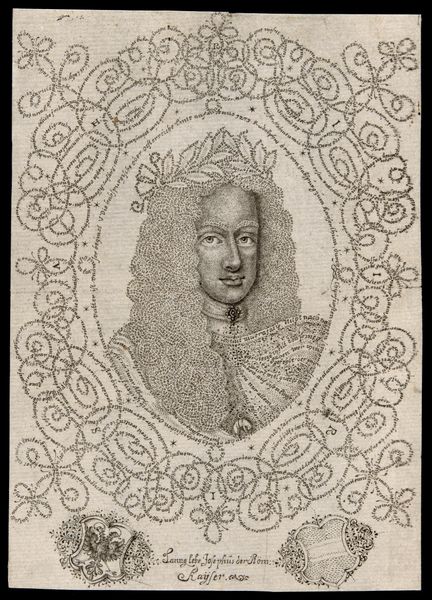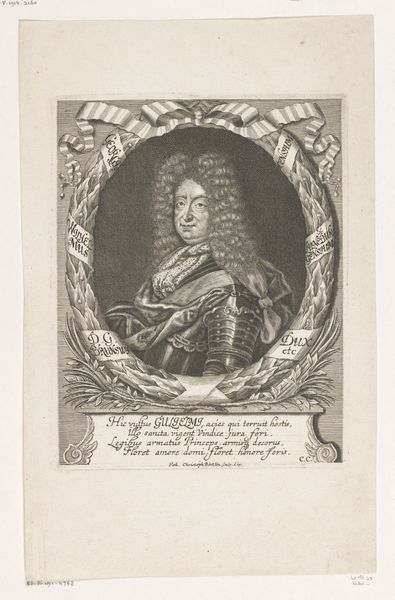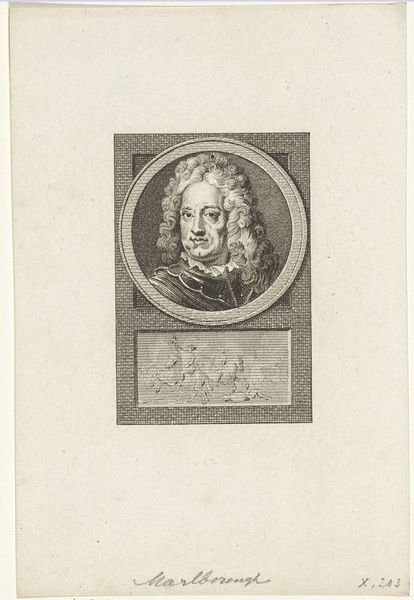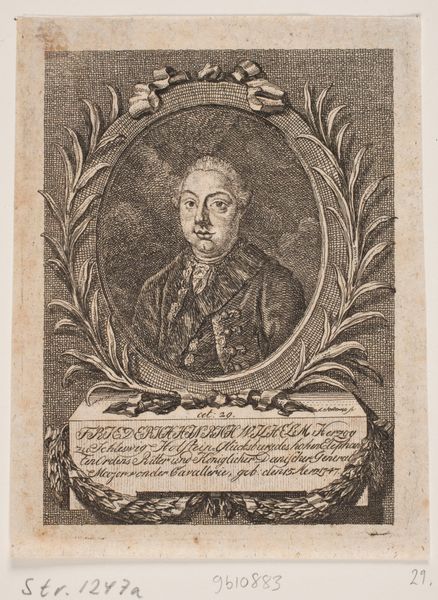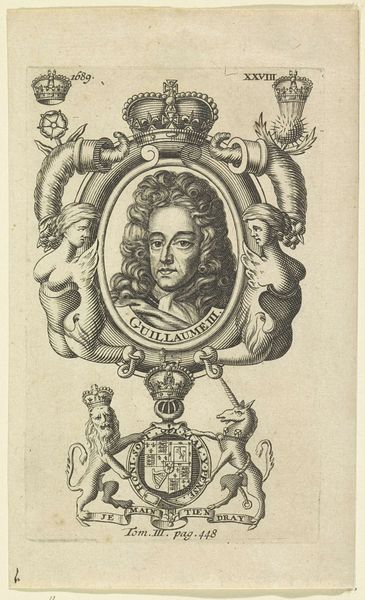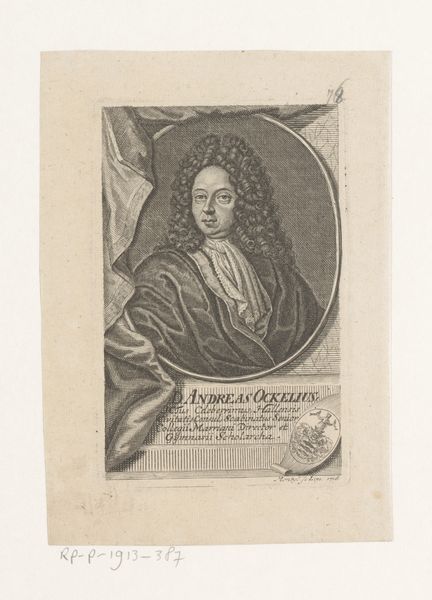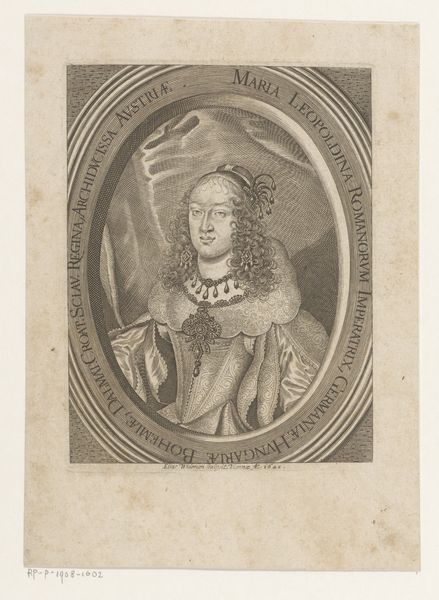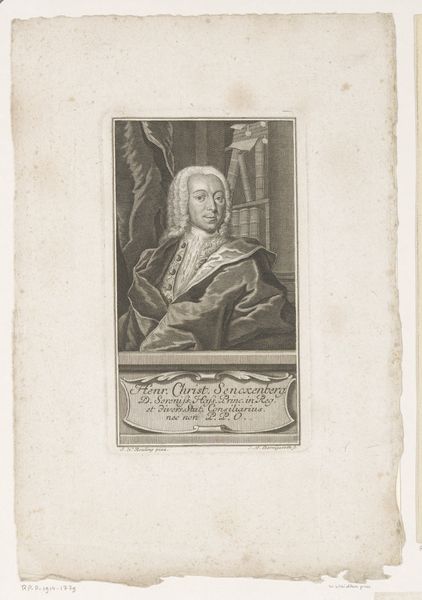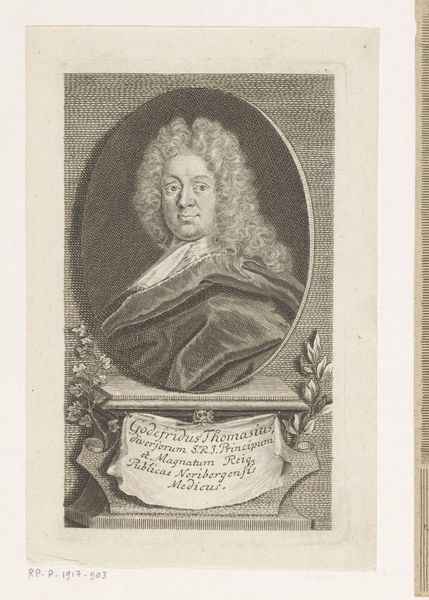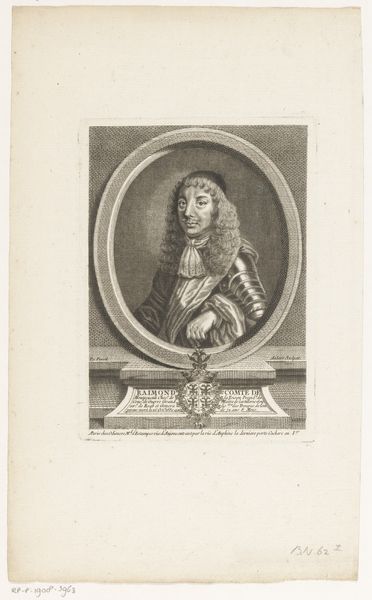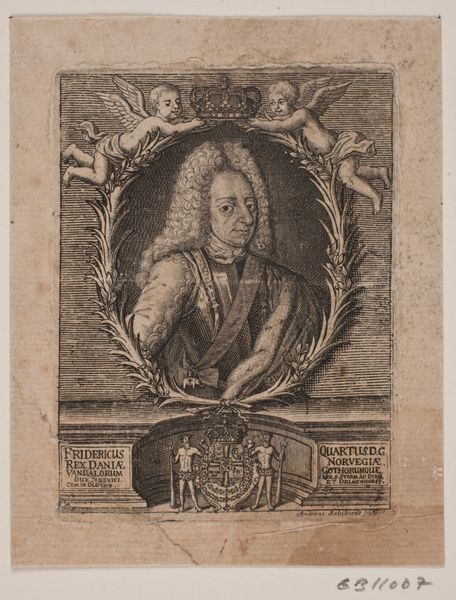
drawing, print, paper, engraving
#
portrait
#
drawing
#
medieval
#
baroque
# print
#
paper
#
history-painting
#
engraving
Dimensions: 132 × 90 mm (image/plate); 152 × 115 mm (sheet)
Copyright: Public Domain
Curator: This engraving by Johann Michael Püchler, circa 1705, captures Joseph I, the Holy Roman Emperor. It’s held here at The Art Institute of Chicago. Editor: The density of the work is striking. It feels almost entirely constructed of tiny script, words forming the visual elements. The scale also seems significant—this probably wasn't designed for quick, casual viewing. Curator: Precisely. The material reality of the printmaking process here is paramount. Consider the skill required to carve such minute details into the plate, then replicate it on paper. Think about the workshops involved, the economy of printmaking fueling propaganda and image-making on a broad scale. It blurs lines between fine art and artisan craft. Editor: From an iconographic standpoint, it reads like a coded declaration. The written word encircling Joseph’s image doesn't just decorate; it actively participates in constructing his persona and legitimizing his authority. The inclusion of the Habsburg coat of arms amplifies that, grounding him within dynastic legacy. He becomes more symbol than man. Curator: Yes, the heraldry speaks to that lineage, and it also connects the consumption of this print to a particular political moment and its subsequent preservation over time. We should also think about the labor of producing such prints versus the expense of other painted portraits only accessible to elite sitters at this time. The act of creating, distributing, and owning this image engages larger swathes of the population, albeit to serve the political motives of an emperor. Editor: And the crown of laurels? Such direct reference to Roman emperors. It is interesting, then, that the artist has woven the text *into* it; these images have deep roots and resonate through historical consciousness, yet here they are literally textualized, framed. It’s as if Püchler wanted the symbolism interpreted actively, verbally, to not allow passive readings. Curator: Ultimately, seeing such detail requires us to think closely about not only image construction, but how images can become integrated with, and become part of, the material production processes of their time. Editor: It makes us reconsider how we interpret historical figures and legacies through their symbolic representations. I will be thinking about it for some time.
Comments
No comments
Be the first to comment and join the conversation on the ultimate creative platform.
